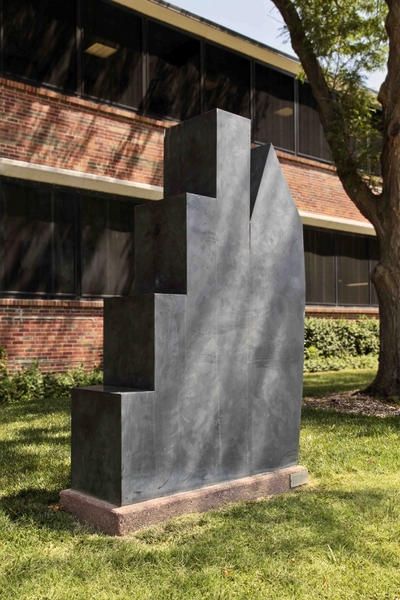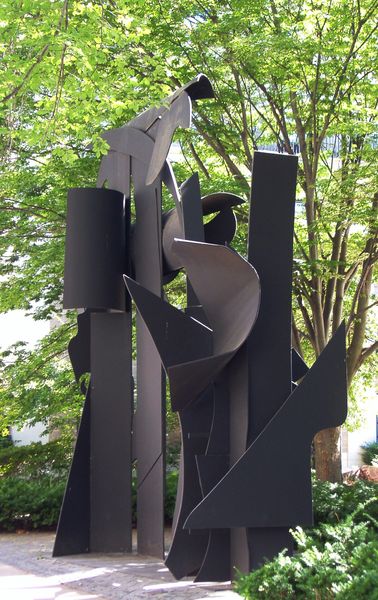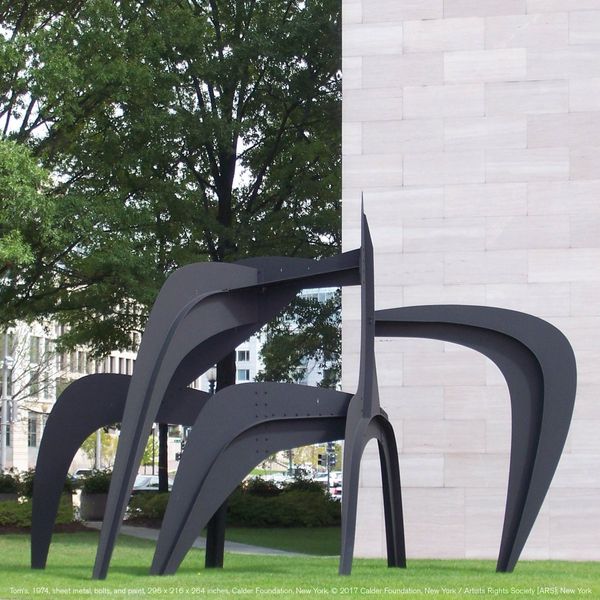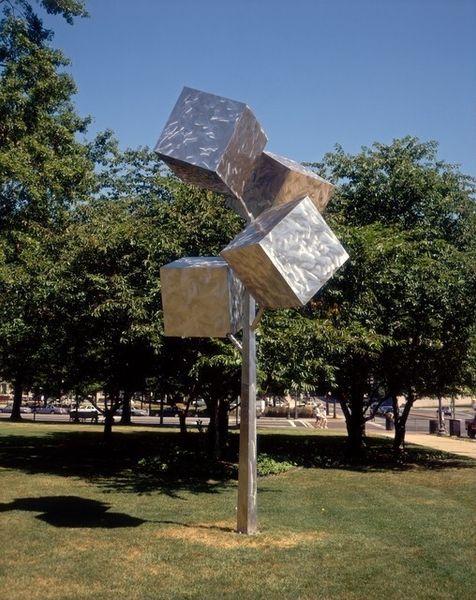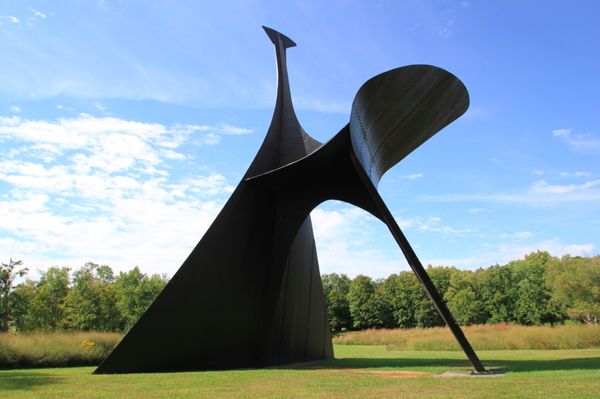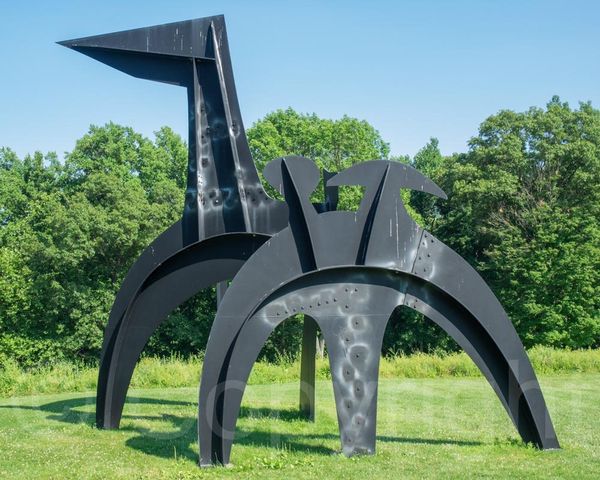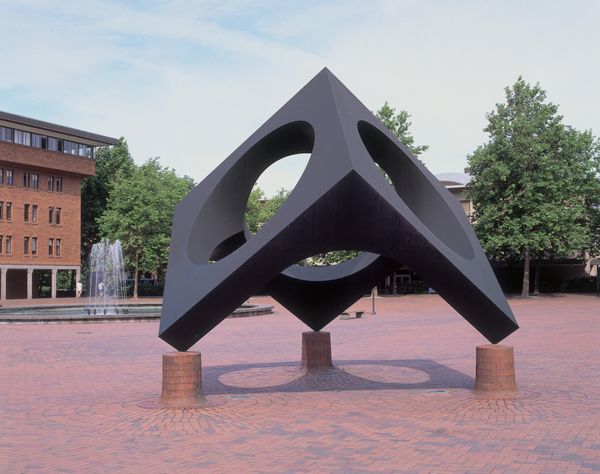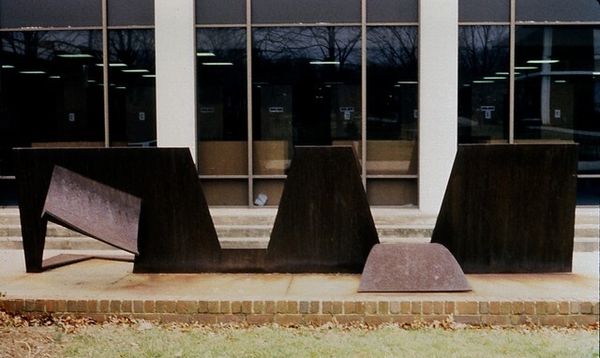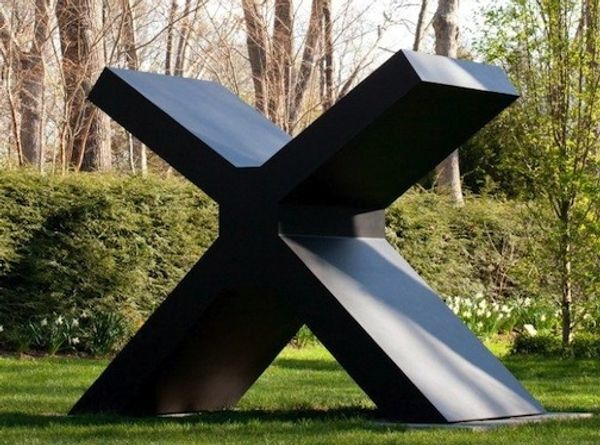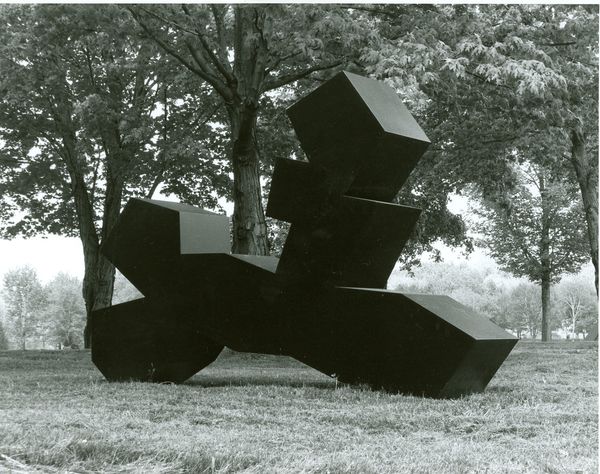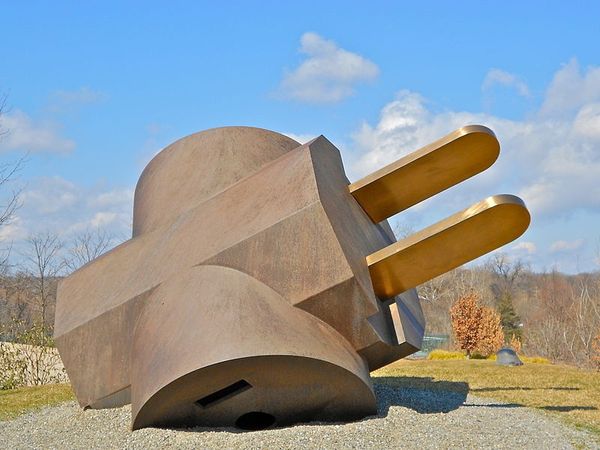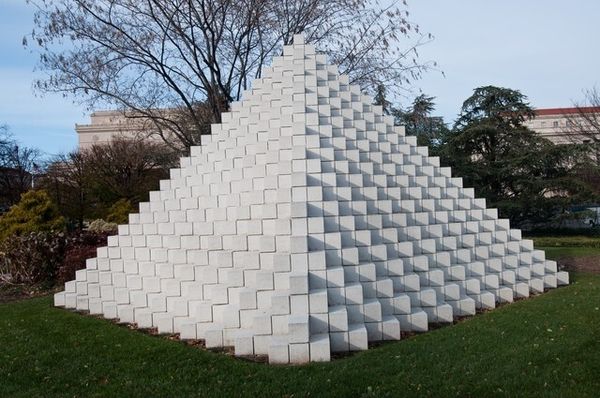
sculpture
#
abstract-expressionism
#
minimalism
#
land-art
#
environmental-art
#
geometric
#
sculpture
#
abstraction
#
modernism
Dimensions: overall ("Smohawk" [component #1]): 61 x 71.1 x 121.9 cm (24 x 28 x 48 in.) overall ("Shaft" [component #2]): 116.8 x 71.1 x 162.6 cm (46 x 28 x 64 in.) overall ("Dud" [component #3]): 61 x 83.8 x 212.1 cm (24 x 33 x 83 1/2 in.) overall ("Slide" [component #4]): 61 x 71.1 x 162.6 cm (24 x 28 x 64 in.) overall ("Crocus" [component #5]): 116.8 x 71.1 x 106.7 cm (46 x 28 x 42 in.) gross weight (component #1): 367 lb. (166.47 kg) gross weight (component #2): 623 lb. (282.591 kg) gross weight (component #3): 742 lb. (336.569 kg) gross weight (component #4): 449 lb. (203.665 kg) gross weight (component #5): 361 lb. (163.749 kg)
Copyright: National Gallery of Art: CC0 1.0
Editor: So, this is Tony Smith’s "Wandering Rocks" from 1967. It’s a sculpture made of steel, sitting right here on the lawn. I’m immediately struck by how… unexpected it is. Sharp, geometric forms just plunked down in this very natural setting. What do you make of this piece? Curator: Well, first consider the material itself: steel. Its industrial origins are inescapable. Smith is forcing a conversation between the fabricated and the organic. We can’t ignore the means of production, the labor involved in shaping these massive forms. Are these "rocks" truly wandering, or placed according to capitalist infrastructure? Editor: I hadn’t thought of the steel that way. It does seem like such a deliberate choice. And thinking about the title, "Wandering Rocks," maybe it’s not so much about free movement, but the predetermined paths of resources and industry? Curator: Precisely! And notice the geometric shapes. Are they purely abstract, or suggestive of something else? Perhaps remnants of architectural forms, detached and dispersed? They invite us to question the processes of building, unbuilding, and the residue left behind by human interventions on the land. The steel is painted black too - isn't it referencing mining? Editor: Yes, that does make me see how material processes shape how we see and interact with the natural world around us. And it makes the idea of minimalist art seem even more subversive, inserting industry right into nature. Curator: Exactly. The social and material context here is inextricable from the aesthetic experience. Editor: This makes me consider sculpture's relation to place in totally new ways. Curator: As it should! Examining production means revealing the networks of meaning embedded in our daily lives.
Comments
No comments
Be the first to comment and join the conversation on the ultimate creative platform.
